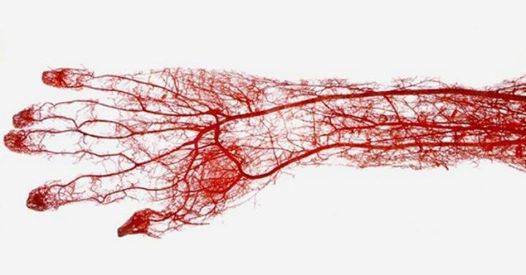Studio Concept Inspiration
Blood
is made up of plasma and cells. Blood provides oxygen and nutrients to every cell in the body as well as carries waste products away. The average person carries approximately 5 liters of blood, which makes up 7% – 8% of our body weight. The heart pumps blood through the arteries, capillaries and veins.
Plasma
- 2.75 – 3 liters of blood is plasma (the rest is cellular)
- liquid portion of blood
- blood cells float in the plasma
- electrolytes, nutrients and vitamins are dissolved in plasma
- plasma distributes substances it contains as it circulates the body
Blood Cells
- all blood cells are produced in bone marrow
- cellular portion of blood contains; red blood cells (RBC), white blood cells (WBC) and platelets
- hematopoiesis is the process of the body producing blood
- all blood cells come from the same type of cell (pluripotential hematopoietic stem cells)
- pluripotential hematopoietic stem cells can form any of the blood cells and can reproduce itself
- pluripotential hematopoietic stem cells then form committed stem cells that can form types of blood cells
Red Blood Cells
- during formation RBC lose their nucleus and leave bone marrow as reticulocyte
- last around 120 days in the blood stream
- when RBC age they are removed by macrophages in the liver and spleen
- a hormone called erythropoietin and low oxygen levels regulate the production of RBC’s
- the most prominent cell in blood which gives blood the red color
- they have a strange shape but can adapt to their surrounding
- contain hemoglobin
- carry oxygen from the lungs to the rest of the body
White Blood Cells
- also known as leukocytes
- part of the immune system
- most WBC’s are formed in bone marrow
- there are 6 types of WBC; neutrophils, eosinophils, basophils, bands, monocytes, lymphocytes
- neutrophils; main defense against bacteria
- eosinophils; kill parasites and have role with fighting bacteria
- basophils; function with allergic reactions
- monocytes; enter tissue and become larger and turn into macrophages
- lymphocytes; responsible for cell mediated immunity
Platelets
- help blood to clot by forming platelet plugs
- formed in bone marrow
- no nucleus
- do not reproduce
Plasma
- clear yellowish fluid
- 90% water
- proteins make up a large part of the remaining 10% of plasma
- electrolytes are also dissolved in plasma
Blood Types
- A
- B
- AB
- O

